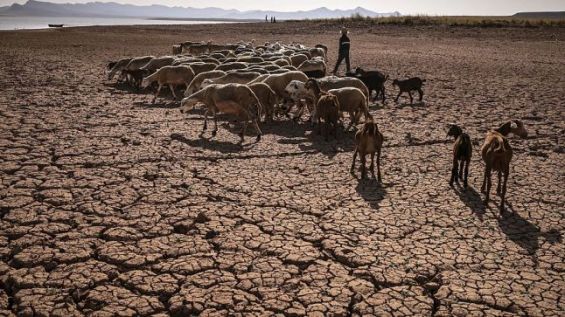2023 was officially the hottest year on record in Morocco, according to a recent report by the World Meteorological Organization (WMO), a specialized agency of the United Nations focused on international cooperation in atmospheric science, climatology, hydrology, and geophysics.
The report highlights the increasing toll that climate change is taking on Morocco, with North Africa experiencing extreme heat waves in July and August. Agadir, in particular, saw a scorching 50.4°C, marking the highest temperature deviation, at 1.25°C above the 1991-2020 average.
Severe droughts also gripped parts of Morocco, Algeria, Tunisia, and neighboring regions throughout 2023. «The highest temperature anomalies were recorded across north-western Africa, especially in Morocco, coastal Mauritania, and north-west Algeria», the report noted.
Furthermore, the report confirmed that below-average annual rainfall levels persisted across North and Northwest Africa, particularly in Morocco, Algeria, Tunisia, and western Libya. The rainfall deficit in these areas exceeded 150 mm, accounting for less than 10% of the total amounts recorded during the 1991-2020 climate period.
Drought levels surpassing historical records in North Africa
The year 2023 saw drought levels surpassing historical records, especially along the northern coasts of Morocco, Tunisia, and Algeria, as well as in southern Cameroon. While some regions, such as the Horn of Africa, are beginning to recover from severe droughts, others, including north-western Africa, continue to face significant rainfall deficits, severely impacting water resources.
For example, Al Massira Dam, Morocco’s second-largest dam, recorded its lowest fill level since its construction in 1976, at less than 6% of capacity, compared to nearly 99% in May 2013, WMO signaled.
Rainfall in Morocco during the 2022/2023 rainy season was 28% below average, marking the fourth consecutive year of precipitation levels at least 20% below average. The country is now enduring its driest four-year period on record. Early data from the 2023/2024 rainy season shows similarly dismal rainfall levels.
The persistent drought has devastated Morocco’s agricultural sector. North Africa’s cereal production in 2023 was estimated at 33 million tonnes—10% below the five-year average. Tunisia’s cereal production saw the largest drop, estimated at just 300,000 tonnes, over 80% below the annual average due to widespread drought.
Algeria also experienced a decline, with a 2023 cereal output of 3.6 million tonnes, 12% less than in 2022 and 20% below the five-year average. Morocco’s 2023 cereal production, estimated at 5.6 million tonnes, showed some recovery from the drought-stricken 2022 harvest but remained 30% below the average.
The report underscores that African countries, on average, lose between 2% and 5% of GDP annually due to extreme weather events. Many nations divert up to 9% of their budgets to address these crises. Without significant mitigation measures, up to 118 million people living in extreme poverty (defined as living on less than $1.90 per day) in Africa could be exposed to droughts, floods, and extreme heat by 2030, further complicating efforts to alleviate poverty and stifling economic growth.





 chargement...
chargement...












